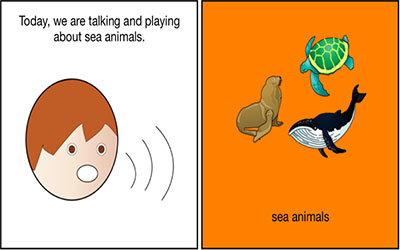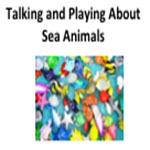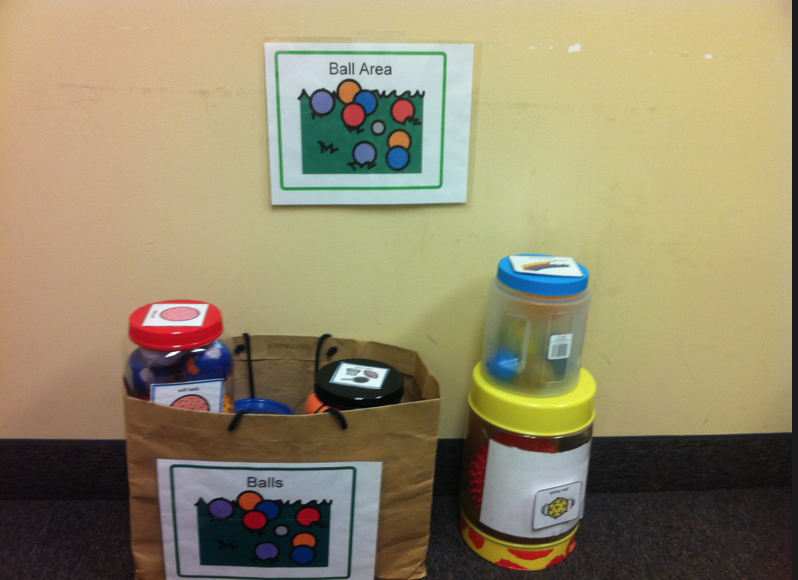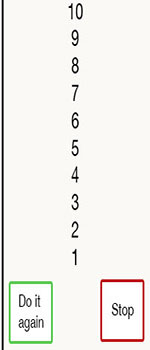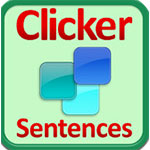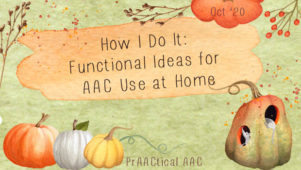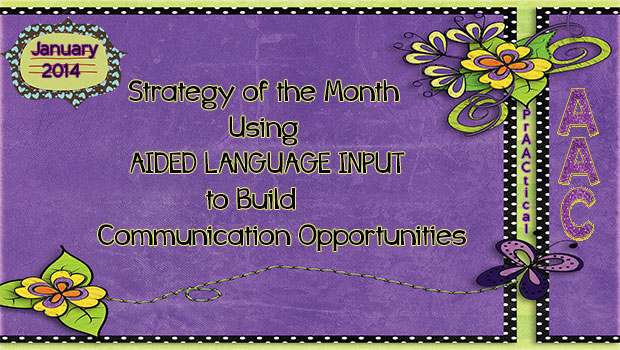PrAACtical Communication Opportunities in SLP Sessions
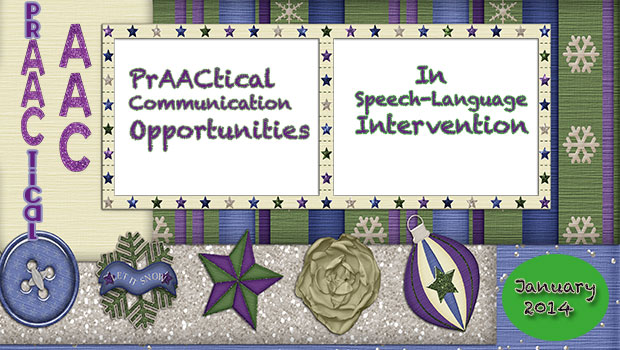
Planning for communication opportunities in every aspect of speech-language therapy helps ensure productive use of time and effort for both clinician and learner. It is not enough to talk to a student, it is not enough to provide fun activities without lots of opportunity for active participation and more specifically communication initiation. Another word for communication initiation/opportunities is communication temptations. Communication temptations are structured situations designed to entice a variety of specific communication functions or semantic relations (Wetherby, 1988). There needs to be lots of times where there is targeted modeling and then a specific, obvious reason for the learner to be the initiator of communication. A temptation to communicate.
Take a look at this sample therapy session for frequent and multiple communication opportunities. Please let us know a favorite or creative communication opportunity that you use.
PrAACtical Considerations
- Meaningful AAC Goals– All quality speech-language intervention sessions start with meaningful AAC goals. Once the goals are established, you can then develop and set up many, many communication opportunities.
- Meaningful Language Activities– We love meaningful language activities because then learners often have motivation to participate AND a format of prAACtice that is easily generalizable.
- Meaningful AAC Display- Learners will have access to their individual AAC no-tech, low-tech, and/or high tech communication display. There are enough words on the display to be able to take advantage of the communication opportunities presented.
A PrAACtical Therapy Session
Target Goals- Request desired objects using agent + action, Comment about present event using action + object, Ask ‘what or what doing’ question
Therapy Theme- Sea Animals (which are fun and meaningful to this learner)
Activities & Opportunities:
Greeting/Walking to Session- Opportunities begin here. We use this opportunity to teach the learner to ask: what are we doing today? We make sure to have a ‘no-tech support to answer the question and so the learner can ‘see’ the fun thing they will be talking about as they walk into the session. For some learners, this may be a schedule, while for other’s it is a theme based visual support (as seen below). This is helpful from a motivation standpoint as well as an opportunity to work on the goal of asking questions. One thing to watch out for with question goals, is answering the question with a question (oh, look you tell me what we are doing). Instead, as soon as the learner asks ‘what doing’, answer by saying, in this case, “we are talking and playing with sea animals”, so that the learner knows ‘asking’ will get them the information.
Getting to Therapy Room (or going anywhere)- We might hang pictures or objects in the hallways that lead from the waiting room (classroom, etc) to the therapy room. We stop at each one and comment. At the beginning, we use a lot of aided language input to model commenting. As learning begins, we may just stop and wait expectantly. Initially, the pictures or objects, might be huge or even an obstacle to our path to the speech room. Later, the ‘commenting’ materials will be less obvious. Each picture or object is one or more commenting opportunity.
Schedule- The session begins by looking at the schedule and then the learner goes and gets the materials for each activity. The materials may be in folders, bags, bins, etc. They are labeled with the symbols that are on the schedule so the learner can be independent in getting their own things. This is in contrast to the learner waiting until the clinician hands them everything. We look for active participation opportunities as often as possible. With the schedule, there are also many opportunities to ask about what is next or comment about liking or disliking what is next. We also often use the schedule at the end of the session as a summary sheet to comment to ‘mom’, ‘teacher’ or a ‘peer’ what we did.
Reading a Personal Participation Book- We might pre-make a power point book to give an outline of the theme. While reading, we would highlight target core and fringe vocabulary. And then of course we can use many opportunities for requesting (“turn” or “turn page”), or commenting (“cool”, “look”, “I see it”). The key is to have the adult facilitator make a comment, then point at another cool picture and use the ‘wait and signal’ strategy with some gestural cues to the AAC display to help the learner take their turn to comment.
Activity Rating Scales- We use activity rating scales after each activity to rate how we like the activity. We accept and reinforce all ratings (both good and bad). But we also use rating scales within activities to provide opportunities to make a variety of analysis about beautiful vs ugly sea creatures, scary vs tame sea animals, seen before vs unseen before sea animals, etc. These are great opportunities to teach self advocacy comments.
Sea Animal Play– Sea Animals are in closed, clear, plastic screw top jars. The jars are given to the learner but they need to ask for “open”, or “animals”, or “more” to request desired objects. Then, within the play, comments are made when different animals “fall down”, or “walk”, or “crash”, or “swim”. The facilitator models, then the learner can ask for “open” and takes a turn making the animal do something so there can be a comment. Sometimes a low-tech visual support is used to specifically show when & where the comment is made. A big question, is how long does this play last or when does the activity end. We do this in a few ways, all which provide opportunities for communication. We might use a number support which shows 1-10 (or 1-5) and then either “done” or a request for “doing more”….. Or once an animal does the action, it is put in a finished bin so when the animals are ‘finished’ the activity is over.
Sea Animal Art– We do art for the process not the product. We choose art that is about the communication opportunities not the cutting, pasting, or drawing skills. For sea animals, we often do a collage where the learner is required to request already cut pictures and they glue them on a page. The collage may be pictures all over the page, or one on top of each other, but the main goal and opportunity here is the requesting. We may also purposefully put in pictures of sea animals that the learner does not know so they have the opportunity to ask “What is it”? or “What are they doing”? Art may only take a few minutes. The number of pictures we have available to glue is in direct proportion to how many opportunities we want the learner to have. This makes the end of the activity very clear….”there are no more”.
Sea Animal Reading & Writing- Reading a real sea animal book or writing a simple book would be another activity within our session. Depending upon the learner and their interest and motivation, we may read a really beautiful sea animal book, or a counting sea animal book. There are many opportunities for requests, “let me see”, “turn the page”, and comments “look”, “my favorite”. This type of reading activity offers a great deal of opportunity for repetition with variety. In terms of writing a book, we love to use the iPad and Clicker Sentences, which allows ALL levels of writers to participate and be authors. We can even mail the finished book to teachers, peers, and families. In writing books with the iPad, there are great opportunities for requesting and commenting as well. If we do not have access to an iPad (it happens), we will go no tech or low tech and make a paper book or make a power point book. We even record power point books where it can be a combination of the adult voice, the child’s voice (natural speech or AAC generated speech).
Summary Sheet– Finally (after usually a 30 minute session), we use the schedule or a summary sheet to go over what we did and how we liked it. We may choose a theme for the next week or month. We do this as a request opportunity. We offer a visual menu of theme possibilities and let the learner be an active participant in deciding what’s next. We again add opportunities for “what questions” by adding in some themes that may be unknown. We then go ‘tell’ the family, teacher, or peer about what we did and if we liked it or not. We may also comment to others about ‘what we will be doing next time’.
All of these activities are just- that activities. We need the opportunities within the activities to make the session meaningful. But we also need instructional strategies within the opportunities to TEACH. Here are a few we may use:
PrAACtical Instructional Strategies
Wait & Signal (time delay prompt)
Filed under: Strategy of the Month
Tagged With: communication opportunities
This post was written by Robin Parker
